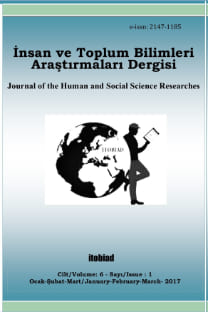Satış Sonrası Piyasalarda Rekabet Politikası ve Kodak Kararı
Satış Sonrası Piyasası, Kodak Kararı, Anti-Tröst Uygulamaları, Eksik Rekabet, Rekabet politikası
Aftermarket Competition Policy and Kodak Decisicion
Aftermarket; Kodak Case; Antitrust Implications; Imperfect Competition; Competition Policy,
___
- Borenstein, S., MacKie-Mason, J. K., & Netz, J. S. (1994). Antitrust policy in aftermarkets. Antitrust LJ, 63, 455.
- Borenstein, S., MacKie-Mason, J. K., & Netz, J. S. (1995). The economics of customer lock-in and market power in services In P. T. Harker (Ed.). The Service Productivity and Quality Challenge. (p. 225-250). Kluwer Academic.
- Borenstein, S., MacKie‐Mason, J. K., & Netz, J. S. (2000). Exercising market power in proprietary aftermarkets. Journal of Economics & Management Strategy, 9(2), 157-188.
- Bork, R. H. (1978). The Antitrust Paradox. A Policy at War with Itself. New York: Basic Books, Inc.
- Cabral, L. (2014). Aftermarket power and foremarket competition. International Journal of Industrial Organization, Vol.35 p. 60-69.
- Calvani, T. ve Siegfried, J. (1979). Economic Analysis and Antitrust Law. Toronto, Canada: Little, Brown & Company.
- Farrell, J., & Shapiro, C. (1989). Optimal contracts with lock-in. The American Economic Review, 51-68.
- Kattan, J. (1993). Market power in the presence of an installed base. Antitrust Law Journal, 1-21.
- Kintner, E., & Joelson, M. (1974). An International Antitrust Primer. New York, NY: Macmillan Publishing Co. Inc
- Klein, B. (1993). Market power in antitrust: Economic analysis after Kodak.Supreme Court Economic Review, 43-92.
- Shapiro, C., & Teece, D. J. (1994). Systems competition and aftermarkets: An economic analysis of Kodak. Antitrust Bull., 39, 135.
- Shapiro, C. (1995). Aftermarkets and consumer welfare: Making sense of Kodak. Antitrust Law Journal, 483-511.
- ISSN: 2147-1185
- Yayın Aralığı: 4
- Başlangıç: 2012
- Yayıncı: Mustafa SÜLEYMAN ÖZCAN
Endüstri Kenti Karabük'ün Sosyal Yaşantısının Şekillenişinde Yenişehir Sineması'nın Rolü
Yaşlılık Döneminde Dini Başaçıkma
Poetika Kavramı ve Şinasi’nin Poetik Tavrı Üzerine
Klâsik Türk Şiirinde Kadın Söyleminin İzinde: Şeref Hanım Dîvânı'nda Ninniler
Muhlisî'nin Cem Sultan Mersiyesi
Poetika Kavramı ve Şinasi'nin Poetik Tavrı Üzerine
Klâsik Türk Şiirinde Kadın Söyleminin İzinde: Şeref Hanım Dîvânı’nda Ninniler
Gana'da Hane Halkının Fakirliğinde Düşüşe Doğru: Kuzey Gana Eyaleti Bongo'da Kadının Rolü
